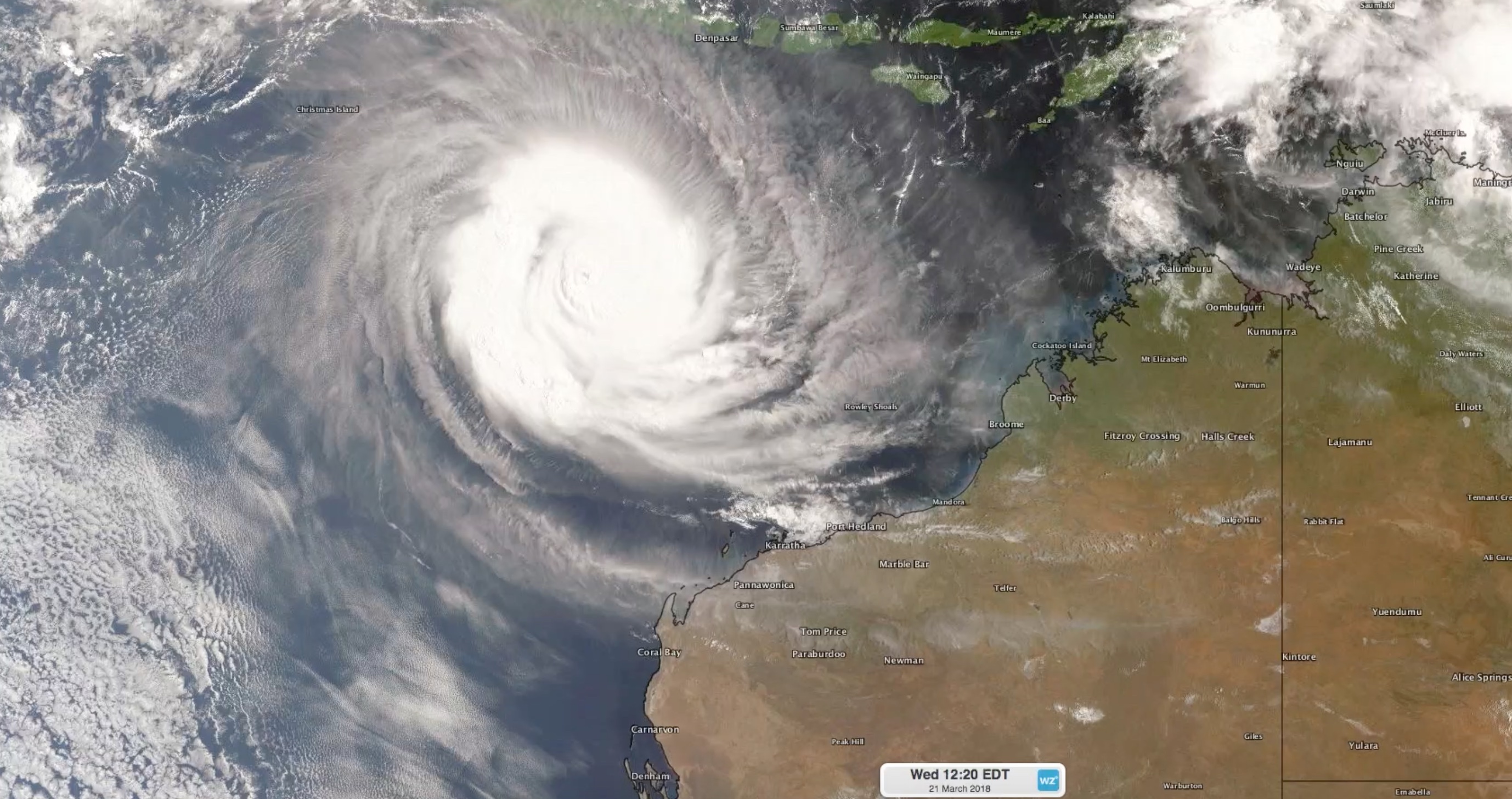Cyclone season outlook: fewer, not weaker

Australia's upcoming tropical cyclone season is tipped to be quieter than usual in terms of cyclone numbers, but not necessarily cyclone intensity.
According to the Bureau of Meteorology's tropical cyclone outlook released on Monday, Australia is expected to see fewer tropical cyclones than usual during its 2018/19 season. On Average, around 11 tropical cyclones form in Australian waters between November and April, four of which make landfall.
While the outlook indicates fewer tropical cyclones during the upcoming season, it doesn't suggest the ones that do form will be weaker than usual.

Image: Cyclone Marcus off WA coast in March 2018.
To understand the implications of the Bureau's outlook, it's worth noting that tropical cyclone season forecasts are produced differently to day-to-day weather forecasts.
Weather forecasts come from powerful supercomputers that run complex mathematical models to predict how the atmosphere will change during the next few days. This type of numerical weather prediction (NWP) model uses vast amounts of data, which makes it only useful for the next week or so.
Unlike these shorter-term weather forecasts, tropical cyclone seasonal forecasts use statistics of cyclone numbers in past years to predict how the next six months might unfold.
The statistical model used by the Bureau for their tropical cyclone season forecast is fairly simple. It looks at recent ocean and atmospheric conditions of the Pacific Ocean that relate to El Nino and La Nina and compares these to similar years in the past. It then looks at the tropical cyclone numbers in those past years as an indicator of how the upcoming season might be affected.
While this statistical model seems basic, the relationship between El Nino or La Nina and the overall number of tropical numbers near Australia has proven to be highly accurate. El Nino typically causes fewer tropical cyclones near Australia and less coastal crossings, while the opposite is true for La Nina.
However, this model does not predict cyclone strength.
Even if there are fewer tropical cyclones during the 2018/19 season, the intensity of those that do develop isn't able to be reliably predicted just yet. To know this, we have to use the powerful NWP models as we get within about a week of each system developing.
Some research suggests that changes to our planet's climate in recent decades is causing a greater proportion of higher intensity cyclones, despite a reduction in the overall number of systems in the Australian region.
It only takes one tropical cyclone to make it a bad season for any one location, so be sure to keep up to date with the latest warnings and information about cyclones throughout the 2018/19 season here: http://www.bom.gov.au/cyclone/